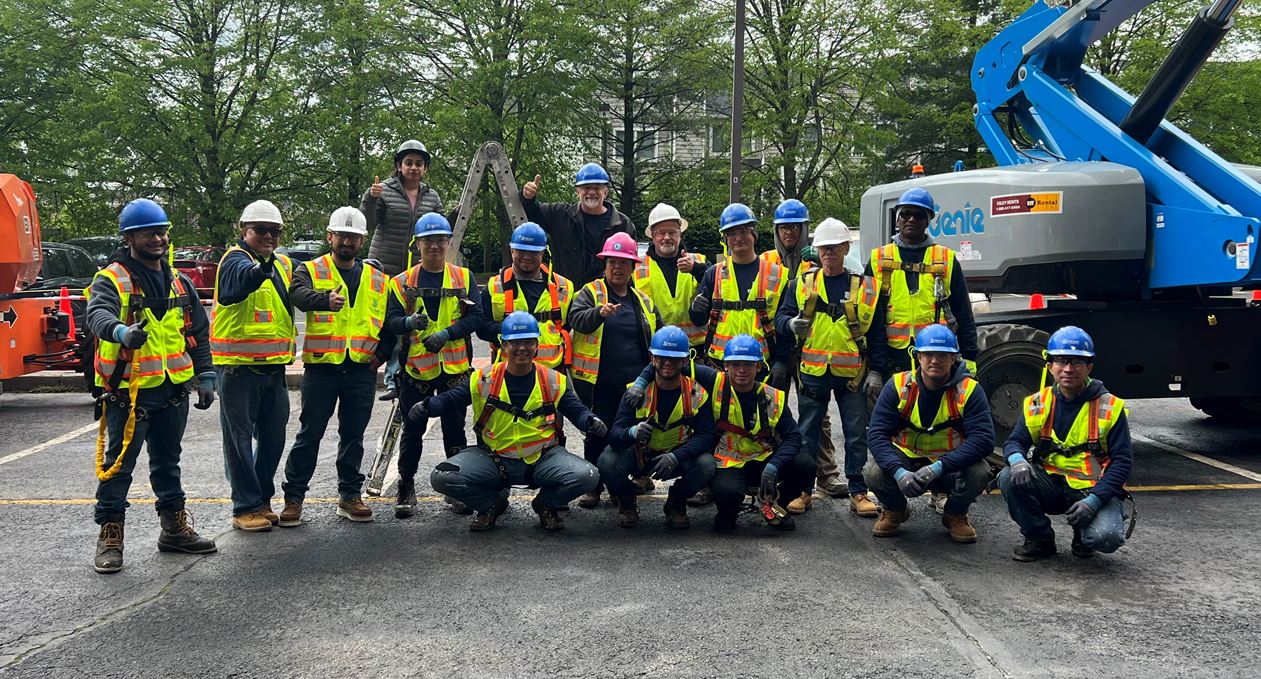OSHA fall protection training is vital for property managers, building owners, and engineers committed to workplace safety. Proper training ensures OSHA compliance, reduces risks, and fosters operational efficiency.
Equipping teams with essential knowledge not only safeguards lives but also prevents costly disruptions. A proactive approach to fall protection reflects your dedication to creating secure environments, empowering your workforce to perform confidently and safely at any height. Safety starts here with a proper understanding of OSHA-compliant fall protection training.
Understanding Fall Protection Training Requirements
OSHA fall protection training is mandated to safeguard employees working at heights, reducing risks of injury and ensuring workplace safety. For property professionals, understanding these requirements goes beyond avoiding fines; it’s about creating safe environments where teams thrive. Safety builds trust, efficiency, and long-term success.
OSHA Standards and Compliance
OSHA mandates strict compliance with fall protection standards to ensure workplace safety. OSHA’s Walking-Working Surfaces (1910.30 Subpart D) regulation outlines specific requirements, including hazard identification, maintaining secure surfaces, and proper use of fall protection systems. Employers are legally obligated to train employees before they are exposed to fall hazards, covering hazard recognition, equipment usage, and maintenance.
Key Components of Training
Key training components include recognizing fall hazards, implementing effective mitigation procedures, and mastering the proper use, inspection, and maintenance of personal fall protection systems. This comprehensive approach empowers workers to identify risks, utilize equipment correctly, and mitigate potential dangers. By fostering a proactive safety culture, OSHA ensures employees have the knowledge and tools to prevent accidents, protect lives and maintain compliance on every job site.
Benefits of Investing in Fall Protection Training
Fall protection training goes beyond compliance—it creates a culture of safety, reduces liability, and enhances productivity. When employees are equipped to identify and mitigate risks, they become the first line of defense against accidents, protecting both lives and business operations.
A well-trained workforce makes smarter decisions in high-risk situations and are empowered to halt unsafe work via Stop Work Authority, preventing costly incidents and reinforcing a proactive safety culture. Organizations that prioritize training demonstrate a commitment to employee well-being, which strengthens their reputation and reduces legal and financial risks.
Investing in fall protection training isn’t just about following regulations—it’s about fostering awareness, accountability, and resilience. A safer workplace leads to a stronger, more efficient business.
Best Practices for Implementing Fall Protection Training
Adopting best practices transforms training into a comprehensive, practical, and impactful journey for your team. Start by defining clear goals, leveraging real-world scenarios, and fostering continuous learning. Here’s how to get started:
- Conduct Regular Training Sessions
Annual training keeps employees sharp, ensures compliance with safety standards, and fosters a vigilant workplace culture where everyone is empowered to proactively prevent risks and protect one another.
- Partner with Qualified Providers
Partnering with experts ensures OSHA compliance and tailored solutions for your building’s fall protection safety. Their industry-specific insights protect employees, minimize liabilities, and keep your business running smoothly—trust experience for peace of mind.
- Focus on Hands-On Learning
Scenario-based training immerses employees in real-world challenges, ensuring safety techniques become second nature. This practical approach builds confidence, sharpens instincts, and reinforces skills essential for workplace safety and incident prevention.
- Emphasize Continuous Improvement
Regularly updating training content with the latest safety regulations, innovations, and team feedback keeps your workforce informed, engaged, and empowered—building a safer, more effective, and forward-thinking workplace culture.
- Foster a Culture of Safety
Promote open communication about hazards and empower employees to report risks confidently to create a workplace where safety thrives. Shared responsibility leads to a safer, stronger team.
Partner With Us And Take The Necessary Fall Protection Steps
For property professionals, OSHA-compliant fall protection training isn’t optional—it’s mandatory. Our Valcourt Group network goes beyond the basics, delivering tailored training that prioritizes safety, compliance, and operational excellence. Unlike competitors who rely on third-party firms, we guide you through every step of your compliance journey.
From hazard assessments and customized safety plans to equipment inspections and hands-on education, our services address your specific needs. Investing in your team’s safety protects lives, enhances operational efficiency, and reduces liability. Request a quote today to experience personalized expertise that sets the gold standard in fall protection training.


